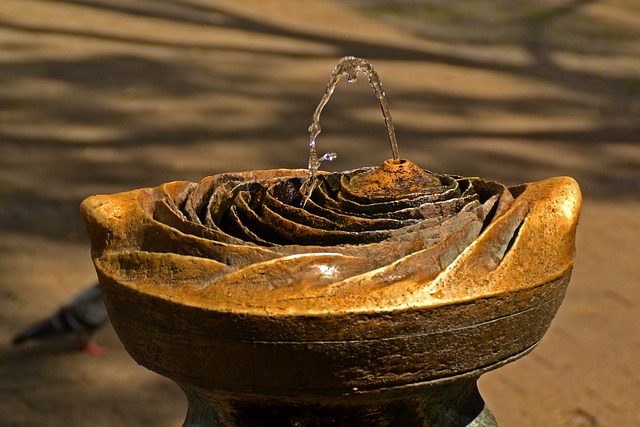In case of a flood in New Braunfels, homeowners must act swiftly to mitigate water damage. This involves assessing water intrusion, prioritizing quick drying using fans and dehumidifiers, and checking hidden moisture to prevent mold and structural issues. Following these steps ensures effective drying for optimal recovery. Learn the comprehensive, step-by-step process to dry out a flooded house in New Braunfels efficiently.
In the event of a flood, knowing how to effectively mitigate water damage is crucial for New Braunfels homeowners. This comprehensive guide offers valuable insights into the process of drying out a flooded house and restoring damaged carpets. We’ll walk you through each step, from initial assessment to final restoration, ensuring your home returns to its pre-flood condition efficiently. Discover proven tips and best practices to tackle water mitigation head-on and learn how to dry out a flooded house in New Braunfels like a pro.
- Understanding Water Mitigation for Flooded Homes in New Braunfels
- The Step-by-Step Process of Dry Out a Flooded House
- Tips and Best Practices for Efficient Wet Carpet Restoration
Understanding Water Mitigation for Flooded Homes in New Braunfels

In the event of a flood, one of the primary concerns for homeowners in New Braunfels is understanding how to effectively dry out their properties. Water mitigation is the process of identifying and eliminating excess moisture from a flooded home, preventing potential damage to structures, belongings, and even personal health. The first step in this process involves assessing the extent of water intrusion and identifying any areas that are particularly vulnerable to mold growth or structural decay.
Once the assessment is complete, homeowners should prioritize drying out affected areas as quickly as possible. This can involve using fans, dehumidifiers, and other specialized equipment to expedite the evaporation process. It’s crucial to remember that how to dry out a flooded house in New Braunfels goes beyond simply removing visible water; it requires thorough drying of walls, floors, and furnishings to ensure no residual moisture remains, which could lead to long-term issues such as mold or structural damage.
The Step-by-Step Process of Dry Out a Flooded House

After a flood, drying out a house is crucial for both structural integrity and preventing mold growth. Here’s a step-by-step guide on how to dry out a flooded house in New Braunfels effectively:
1. Assess the Damage: Begin by evaluating the extent of water damage throughout your home. Identify areas that require immediate attention, such as basement or first-floor rooms with substantial water accumulation. Remember, swift action is key to minimizing long-term issues.
2. Remove Standing Water: Use buckets or specialized equipment to remove visible standing water from floors and low-lying surfaces. This initial step is vital in preventing further damage and ensuring a faster drying process. Keep in mind, if the water level is too high, consider professional assistance for safe removal.
3. Turn Off Electricity: For safety reasons, locate your home’s main electrical box and turn off power to affected areas. Water and electricity never mix well, so this step is essential to avoid potential hazards. Proceed with drying efforts only after a qualified electrician confirms it’s safe to restore power.
4. Open Windows and Doors: Once the immediate threat of water has been mitigated, open windows and doors in the flooded rooms. Proper ventilation aids in evaporating moisture from surfaces and the air, accelerating the drying process. Make sure outdoor conditions allow for efficient air circulation.
5. Use Fans and Dehumidifiers: Employ fans to circulate air and accelerate drying. Place dehumidifiers in affected areas to extract moisture from the air and surfaces. These tools work together to remove remaining humidity, preventing mold growth and ensuring a faster recovery.
6. Check for Hidden Moisture: Even after visible signs of water have dissipated, hidden moisture may persist within walls, insulation, or flooring. Utilize moisture meters to check these areas. Address any persistent moisture by repeating the drying process or consulting professionals specializing in water damage restoration.
Tips and Best Practices for Efficient Wet Carpet Restoration

When dealing with a flooded house in New Braunfels, efficient wet carpet restoration requires prompt action. The first step is to contain and remove standing water immediately using buckets or mops. This not only prevents further damage but also helps to dry out the area faster. Next, isolate the affected area by turning off electricity at the main breaker to avoid electrocution risks and the potential for mold growth due to moisture.
Proper ventilation is crucial for drying out a flooded house in New Braunfels. Open windows and doors to facilitate air circulation, and consider using fans to expedite the process. It’s essential to use professional-grade dehumidifiers to remove excess humidity from the air and carpet fibers. Regularly monitor temperature and humidity levels, aiming for an ideal range of 65–70°F (18–21°C) and 30–50% humidity. Lastly, clean and disinfect the area thoroughly after drying to prevent bacterial growth and ensure a hygienic environment.
After understanding water mitigation techniques for flooded homes in New Braunfels and following the step-by-step process of drying out a house, it’s crucial to implement efficient wet carpet restoration practices. By adhering to best practices, you can ensure your home not only recovers from water damage but also minimizes the risk of mold growth and long-term structural issues. Remember, acting promptly is key when dealing with flood damage, so “how to dry out a flooded house in New Braunfels” knowledge becomes invaluable for successful restoration.
